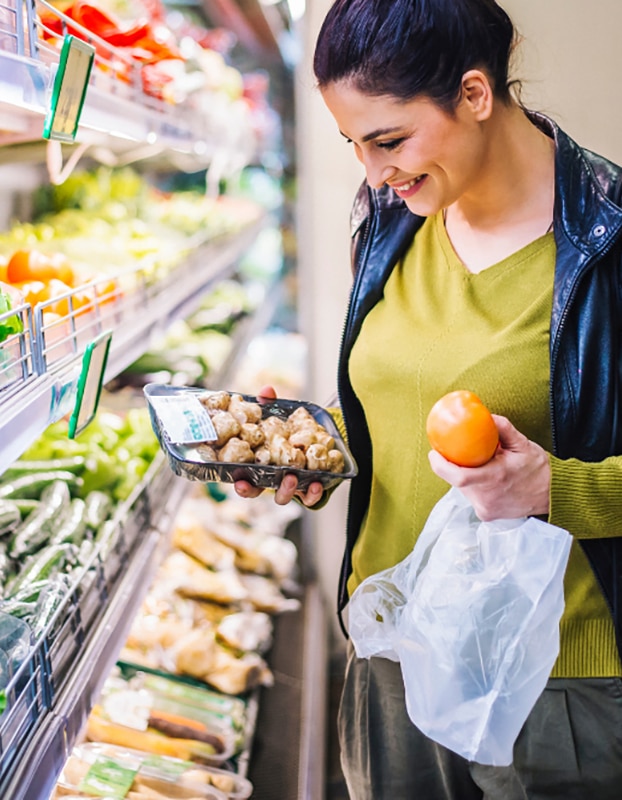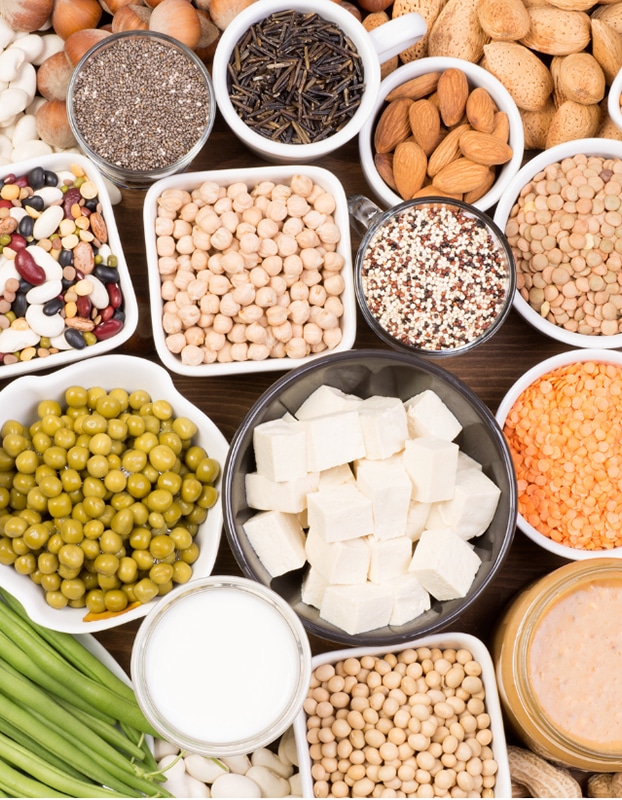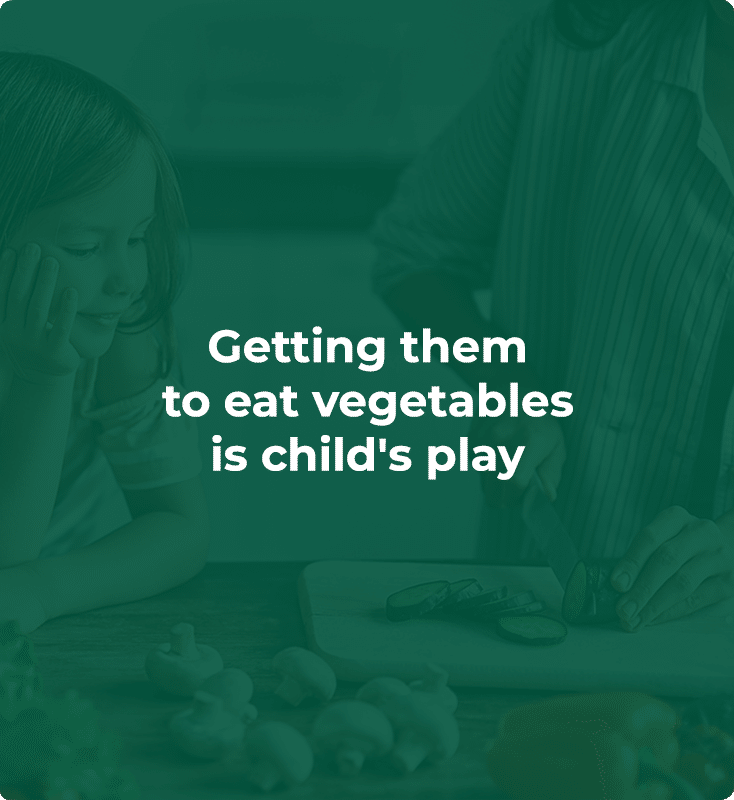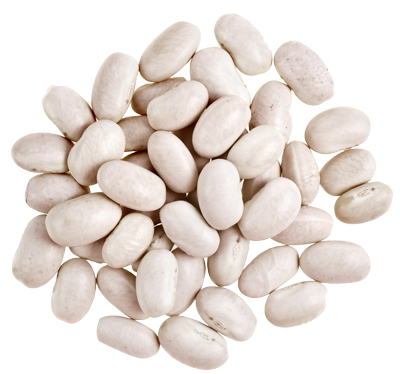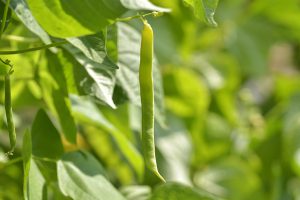Recipes we love
See all recipesRed bean brownie
An original recipe inspired by Japanese people who use red beans for their pastries. Softness and nu...
Flageolets with cream
An easy and quick recipe that brings nutrients such as vitamin B9 which contributes to the normal ps...
Health
benefits
A healthy, inexpensive little grain !
White kidney beans, like all dried legumes, are among the most protein-rich plant-based foods. What’s more, they contain no fat. These two characteristics provide major health benefits, contributing to a balanced, low-cost diet What’s more!
dried vegetables are also important for the health of the planet!
They also contain:
- iron (cognitive function, oxygen transport, energy metabolism, immune system)
- calcium (energy metabolism, muscular function, bones and teeth)
And, because they’re rich in potassium and low in sodium, they have natural diuretic qualities.
White kidney beans are also :
- a source of vitamin B9 (for cellular renewal, particularly important for pregnant women for fetal development, for growing children, and for convalescents).
- a source of potassium (for the nervous system, muscular function, and blood pressure)
- a source of magnesium (for fatigue reduction, energy, protein synthesis, muscular contraction, nerve impulse transmission, and bone and teeth health)
- a source of fiber (bowel movement regulation, satiety)
Nutritional
composition
When is the right
time to eat them?
All year.
White kidney beans are available year-round, because they are eaten dried and usually canned!
Vegetable patch or
urban balcony?
White kidney beans are annuals that can be bushy or climbing. Each pod holds four to twelve white, kidney-shaped seeds. White beans are grown in a soil that is neither too acid, nor too limy.
To learn everything you need to know about growing white beans, read the page on growing tips.
Legumes are one of types of food that should be embraced for a transition to a plant-based diet. Find out more in the exclusive interview with famous epidemiologist Walter Willet!
Choosing and
storing white kidney beans
Choose your white beans well :
- Go for freshness and take note of the use-by date: the most recently picked white beans are the easiest to digest, and cause fewer digestive inconveniences (flatulence, grumbling noises).
How to store your white kidney beans :
- In a dry place, away from light, for 1 year maximum.
Anti-waste tips
Do you have white beans left over? Don’t waste them!
- Make them into a soup with oil,
garlic, onion and celery. - Add them to a salad with tuna,
onions and tomatoes and a lemony yoghurt sauce. - Put them into a vegetable stew or curry.
What is the environmental impact?
The Product Environmental Footprint (PEF), a score established by Agribalyse*, tells us more! It takes account of all the phases in a vegetable’s life cycle: how it’s grown, the impact of its transport, the impact of its processing, and so on. The lower the score, the lower the environmental impact.
- White beans, raw (dry): 0.05
- White beans, cooked: 0.06
- Steak, raw: 2.77
**Data taken from the Agribalyse database, which gives the environmental score of foodstuffs. This unique score is the average of 16 indicators, calculated using the European methodology PEF. It is not the same as an environmental label or “eco-score”.
Equivalent CO2: for 100g of raw white beans: 0.023 kg of CO2 eq, which is the same as 0.7 g of steak or driving 92 m by car
Tips and
tricks
White beans go well with…
Cooked: Imagine cassoulet in France, baked beans in England, or fabada asturiana in Spain without white beans! Their texture is not floury, which makes them ideal for cassoulet and the like. In recipes such as these, the beans are simmered slowly with lard, sausages or other fatty pork meats. They are delicious in stews and casseroles because they absorb the flavors of the ingredients with which they simmer. The alchemy that takes place gives a copious dish that is at the same time well rounded, digestible and nutritious.
Cooked white beans also make a good basis for mixed salads. They take particularly well to herbs and a tangy dressing. Savory, parsley and tarragon will bring out their delicate, almost sweet taste.
How to prepare white beans
Always soak dried white beans before cooking them! Overnight in cold water will make them more digestible, then precook them for a few minutes in water (blanching). Afterwards change the water to continue cooking over a slow heat, adding flavoring or vegetables if you prefer.
They can be particularly delicious and very digestible if stewed slowly or served straight from a can or jar, together with flavoring and especially savory – which the Germans call “bean herb”.
Can everyone
eat it?
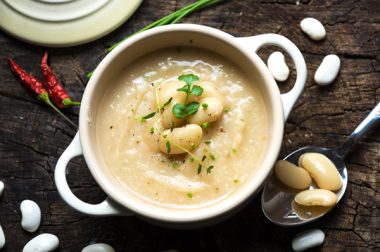
Young children
White beans can irritate the bowel, be difficult to chew, and present a risk of pulmonary aspiration. It is therefore better not to feed them to children before the age of 15 months.
And everyone else
To make sure you fully benefit from pulse proteins, eat a grain product or nuts and seeds along with white kidney beans. Like other pulses, white beans do not contain all the amino acids (protein-forming molecules) that our body needs. They are rich in lysine (an amino acid) but have very little methionine (another essential amino acid). As for grain products (wheat, rice, etc.), nuts, and seeds, they contain essential amino acids that pulses lack or contain only in small quantities. So the two together means that our food is an excellent source of protein, even without meat. It’s a winning combination!
See plenty of other tips for encouraging children to eat vegetables
What is the difference between vegetables and legumes? We explain here!
Where do they come from?
Origins and varieties
Origins
The main dried bean producers are India, Brazil, Mexico, the United States, Indonesia and China. Around 85% of all dried beans are eaten in their country of production. However, India and China especially consume beans of the Vigna species.
Varieties
White beans come in several varieties:
- large white beans with two flat ends;
- white pea beans, which are smaller than white kidney beans;
- great northern, with an average size, round shape and rounded ends;
- cannellini with their square ends are particularly popular in Italy;
- a small, oval-shaped white bean that is the size of a pea;
- canneberge beans are big and round – also called coco beans in Europe.
All bean varieties have a sweetish taste, more so than the red kidney bean.



 Celery
Celery  Eggplant
Eggplant  Vegetable garden: growing flageolet
Vegetable garden: growing flageolet 


